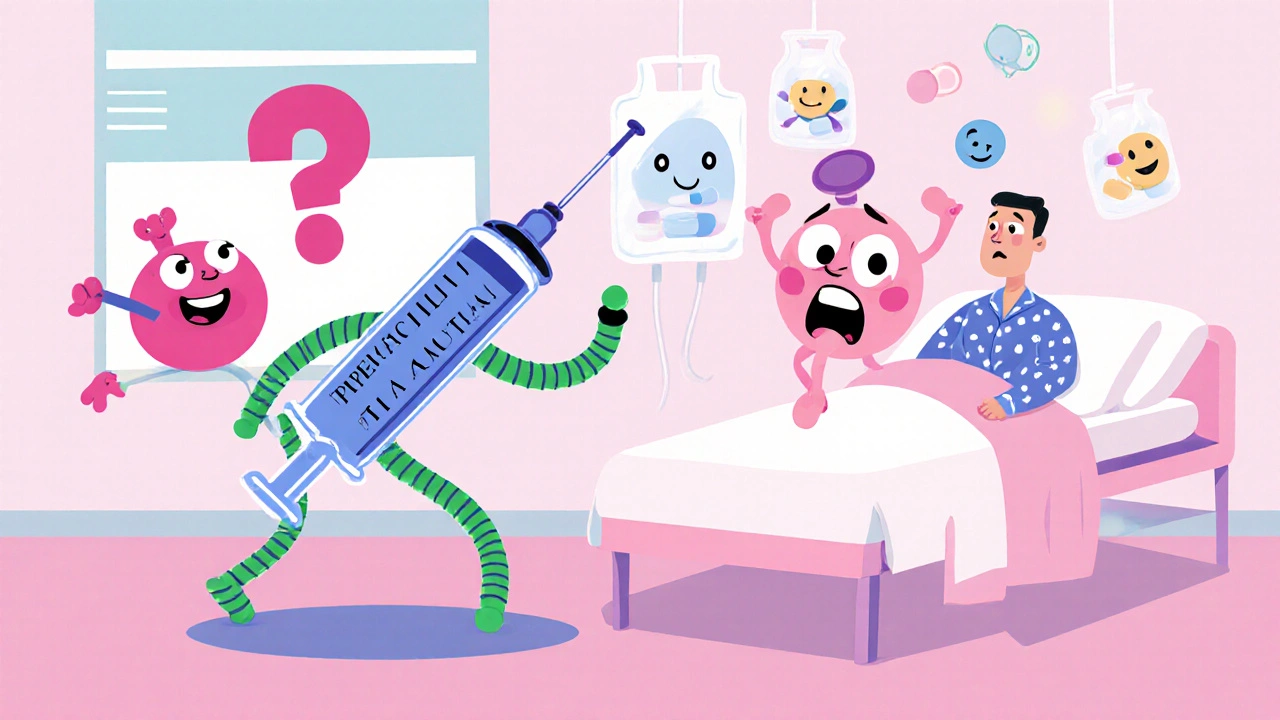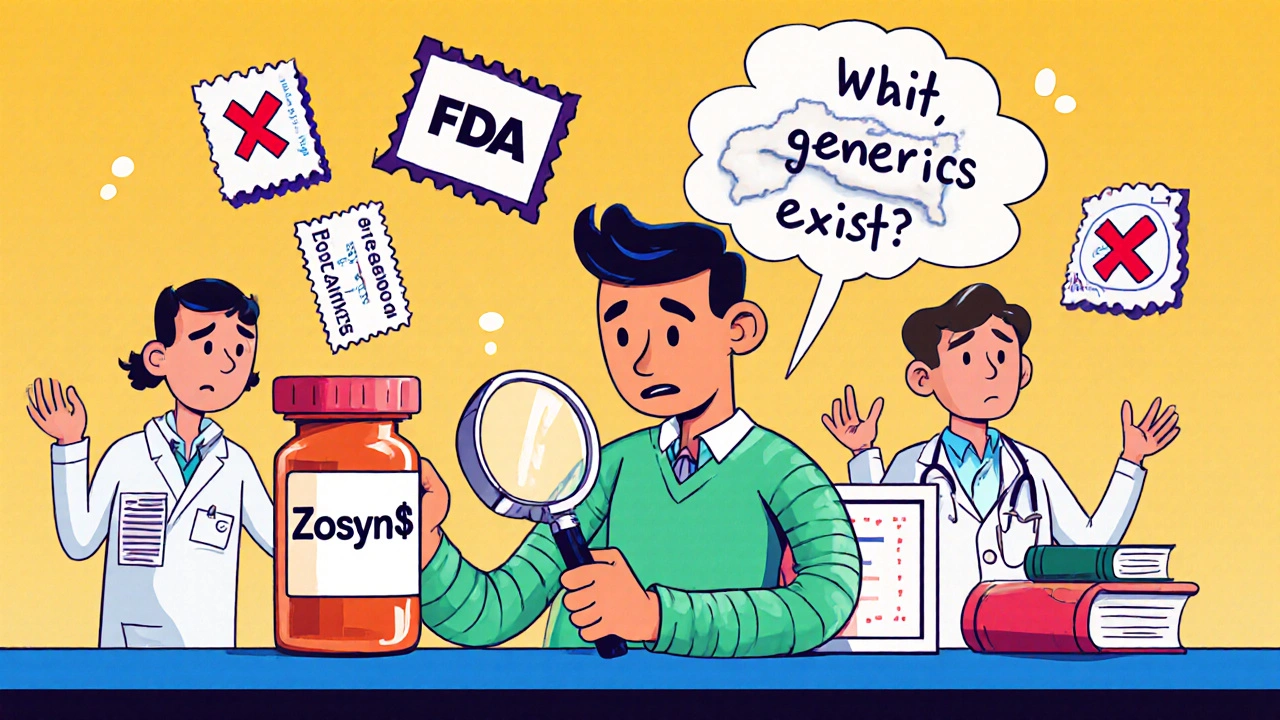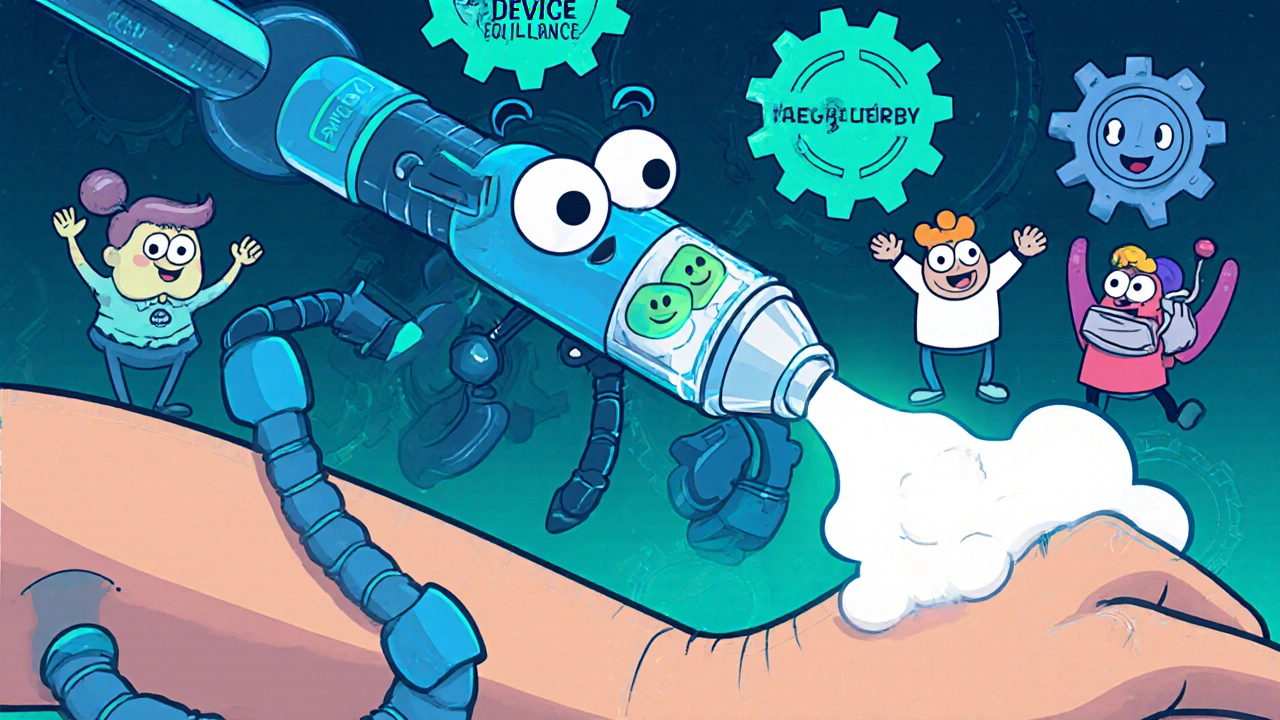
When you’re prescribed an antibiotic like piperacillin and tazobactam, you might not realize you’re getting a combination product-two drugs in one injection, designed to work together against stubborn infections. These aren’t just random mixes. They’re carefully engineered to overcome resistance, improve absorption, or target multiple bacterial pathways at once. But here’s the real question: Are generic versions of these combination antibiotics actually available? And if so, why don’t more doctors or patients know about them?
What Exactly Is an Antibiotic Combination Product?
An antibiotic combination product isn’t just two pills in one bottle. It’s a single medical product that blends two or more active ingredients-usually antibiotics, sometimes an antibiotic plus a device-into one unit. Think of it like a hammer and nail sold as one tool instead of separate items. The most common examples include:- Piperacillin-tazobactam (Zosyn®)
- Amoxicillin-clavulanate (Augmentin®)
- Cefepime-enmetazobactam (Exblifep®)
- Meropenem-vaborbactam (Vabomere®)
How Do Generic Versions Get Approved?
Generic versions don’t just show up overnight. They go through the Abbreviated New Drug Application (ANDA) is a regulatory pathway used by manufacturers to prove their product is therapeutically equivalent to a brand-name drug without repeating expensive clinical trials. For simple pills, this is straightforward. But for combination products? It’s messy. The FDA requires generic versions to match the brand-name product in:- Active ingredients and strength
- Route of administration (injection, oral, inhalation)
- Dosage form and stability
- Therapeutic effect in the body
- Manufacturing quality and safety
Why Generic Availability Isn’t Always Simple
You’d think if a patent expires, generics flood in. But that’s not what happens with combination products. A 2021 study in Nature Communications tracked 13 antibiotics after generic entry. Only five-aztreonam, cefpodoxime, ciprofloxacin, levofloxacin, and ofloxacin-saw a big jump in prescriptions. One, cefdinir, actually dropped. Others stayed flat. Why the inconsistency?- Some doctors don’t know generics exist
- Pharmacies may not stock them due to low demand
- Insurance formularies still favor brand names
- State laws don’t clearly allow substitution of combination products

Cost Savings Are Real-But Not Always Passed On
The math is clear. When generics enter, prices drop by 30% to 80%. Between 2010 and 2020, generic drugs saved the U.S. healthcare system nearly $2.2 trillion. For combination antibiotics, that’s huge. A single vial of brand-name Zosyn can cost $150 or more. The generic? Often under $40. But here’s where it gets frustrating: hospitals and insurers don’t always pass those savings to patients. A study found that even with generic availability, out-of-pocket costs for antibiotics stayed high for people without good insurance. Why? Because pharmacy benefit managers (PBMs) still negotiate rebates with brand manufacturers, and those rebates don’t always benefit the patient at the counter. The real win? Better adherence. When patients pay less, they’re more likely to finish their full course. That means fewer resistant infections down the line. That’s not just a cost saving-it’s a public health win.Device-Based Combinations Are the Next Frontier
The future isn’t just pills and injections. It’s generic drug-device combination products (g-DDCPs) are products like auto-injectors, inhalers, or smart pumps that deliver two antibiotics in one device. Imagine an inhaler that delivers aztreonam and tobramycin together for cystic fibrosis patients. Or a pen that mixes two antibiotics just before injection. These are harder to copy. Why? Because the device matters. The needle size, the mixing mechanism, the button pressure-all affect how the drug gets into the body. The FDA requires manufacturers to prove every single part of the device behaves identically to the original. That’s why only a handful of g-DDCP generics exist today. But with more complex therapies on the horizon, this is where the next wave of generic innovation will happen.
What’s Changing in 2025?
The FDA’s Office of Combination Products (OCP) has been holding regular updates since 2024 to streamline approvals. At the September 2024 REdI conference, regulators outlined new best practices:- Clearer guidance on when an ANDA is acceptable vs. needing a 505(b)(2) application
- Standardized templates for device equivalence data
- Early engagement options for manufacturers to avoid costly delays
What Should Patients and Providers Do?
If you’re prescribed a combination antibiotic:- Ask if a generic version is available
- Check with your pharmacy-some don’t stock them unless asked
- Ask your doctor to write “dispense as written” only if you need the brand for clinical reasons
- Use tools like GoodRx to compare cash prices between brand and generic
- Know which combination generics are approved (FDA’s Orange Book lists them)
- Don’t assume brand is better-equivalence is proven
- Advocate for formulary changes at your hospital or clinic
Are generic antibiotic combination products as effective as brand names?
Yes. The FDA requires generic versions to meet the same strict standards for safety, strength, purity, and performance as the brand-name product. They must demonstrate therapeutic equivalence through bioequivalence studies and device testing-without needing new clinical trials. Studies show no difference in patient outcomes when switching from brand to generic combination antibiotics.
Why aren’t more doctors prescribing generic antibiotic combinations?
Many doctors aren’t aware generics exist, especially for complex combinations. Others assume brand names are more reliable, even when evidence shows otherwise. Pharmacy stock issues and insurance formulary restrictions also play a role. Education and better access to FDA’s Orange Book listings can help change this.
Can pharmacists substitute a generic for a brand antibiotic combination?
It depends on your state. Most state substitution laws were written for simple oral drugs and don’t clearly cover combination products with devices. Some states allow substitution only if the prescriber writes “dispense as written.” Others require additional documentation. Always check your state’s pharmacy board rules.
How do I find out if a generic version is available for my antibiotic?
Check the FDA’s Orange Book, which lists all approved generic drugs and their therapeutic equivalence ratings. You can search by brand name (like Zosyn) to see if any generics are approved. Your pharmacist can also look this up. If no generic appears, ask your doctor if an alternative combination is available.
Do generic combination antibiotics cost less for patients?
Yes, but not always at the pharmacy counter. The wholesale price drops by 30-80%, but insurance plans and pharmacy benefit managers sometimes don’t pass those savings to patients. Using cash price tools like GoodRx often reveals the biggest savings. For uninsured patients, generics can cut costs from hundreds to under $50 per course.
What’s the biggest barrier to more generic combination products?
The biggest barrier is regulatory complexity. Designing a generic version of a drug-device combo requires proving every part of the device works identically to the original. This takes time, expertise, and money. Combined with outdated state substitution laws, it slows down market entry-even when the science says the generic is safe and effective.
What’s Next for Antibiotic Generics?
The number of combination products is growing fast. New ones are being developed for resistant infections, cystic fibrosis, and hospital-acquired pneumonia. If we want these to be affordable, the system has to adapt. The FDA is moving in the right direction-simplifying pathways, improving guidance, and working with manufacturers to reduce delays. But real change will come when prescribers, pharmacists, and patients start asking the same question: “Is there a generic?”-not just for pills, but for every kind of antibiotic delivery. Because when a life-saving drug costs less, more people get treated. And that’s not just good economics-it’s better health.Comments (9)
-
Douglas Fisher November 26, 2025
Wow, this is so important-and I can’t believe how many people just accept the brand-name price without asking! I’ve seen patients cry over $150 antibiotic bills when the generic’s under $40. It’s not just about cost-it’s about dignity. Why should someone choose between feeding their kid and finishing their meds? We need pharmacists to be empowered, not handcuffed by state laws written in the 1990s. Seriously, if the FDA says it’s equivalent, then let the pharmacist substitute. End of story.
-
Albert Guasch November 27, 2025
It is imperative to acknowledge the profound regulatory and pharmacoeconomic implications inherent in the genericization of combination antibiotic products. The Abbreviated New Drug Application (ANDA) pathway, while efficacious for monotherapies, presents substantial bioequivalence challenges when applied to device-integrated formulations. The physicochemical interactions between polymeric components of delivery systems and active pharmaceutical ingredients necessitate rigorous analytical validation, which is frequently underappreciated by lay stakeholders. Consequently, the temporal lag in market penetration is not indicative of regulatory failure, but rather a reflection of the non-trivial engineering constraints involved.
-
Ginger Henderson November 29, 2025
So… you’re telling me I’ve been paying extra for years because doctors don’t know about generics? Cool. I’m just glad I didn’t die from it. 😅
-
Bethany Buckley December 1, 2025
How tragic that we live in a society where therapeutic equivalence is quantified by cost savings rather than ontological integrity. The FDA’s approval of generics is merely a bureaucratic gesture-what we truly lack is a philosophical reckoning with the commodification of healing. 🌿💊
Is it not the height of postmodern absurdity that a vial of piperacillin-tazobactam, a marvel of molecular synergy, is reduced to a line item on a PBM spreadsheet? The device isn’t just plastic-it’s the metaphysical vessel of our healthcare decay.
-
Stephanie Deschenes December 2, 2025
Great breakdown. I’m a hospital pharmacist and I can confirm: most of us know generics exist, but we rarely get asked for them. If a provider doesn’t specify ‘dispense as written,’ we *can* substitute in most states-but we’re often afraid of pushback. A quick note on the Orange Book: it’s searchable by brand name. Just type in ‘Zosyn’ and you’ll see 7 approved generics. Easy. Maybe we need a poster in every clinic: ‘Ask: Is there a generic?’
-
Cynthia Boen December 4, 2025
This whole post is just pharma propaganda. Generic antibiotics are cheaper because they’re cut corners. You think the FDA actually tests these things? Nah. They rubber-stamp it because Big Pharma pays them off. I’ve seen patients get sick after switching-no one talks about that. And don’t even get me started on those ‘smart pumps.’ They’re just glorified toys with a price tag.
-
Amanda Meyer December 5, 2025
I appreciate the depth here, but I have to push back on the assumption that doctors are just ‘unaware.’ Many of us are cautious because we’ve seen cases where substitution led to unexpected reactions-even with FDA approval. The real issue isn’t knowledge, it’s liability. If a patient deteriorates after a generic switch, who’s on the hook? Until the legal framework catches up, caution will win over cost savings. We need standardized protocols, not just wishful thinking.
-
Jesús Vásquez pino December 6, 2025
Let me tell you something real: I’m a nurse in a rural ER. We use generics every day. The brand? We don’t even order it unless the patient’s insurance forces it. We’ve had zero issues. The problem isn’t the drugs-it’s the system. Insurance companies, PBMs, hospital admins-they’re the ones keeping prices high. Doctors? We’re just trying to keep people alive. Stop blaming us. And yes, I’ve told patients to use GoodRx. It’s saved lives.
-
hannah mitchell December 8, 2025
Thanks for writing this. I’m not a healthcare worker, but my dad was on Zosyn last year. We paid $120 out of pocket until I found the generic on GoodRx for $38. I didn’t even know to ask. I’m gonna print this out and give it to my doctor’s office.
